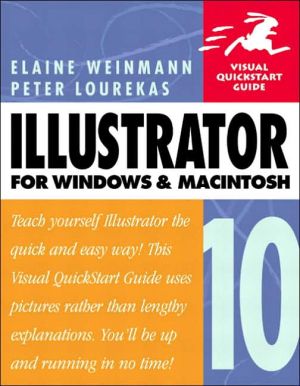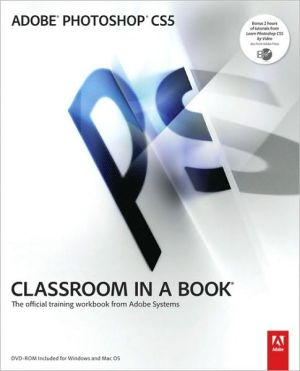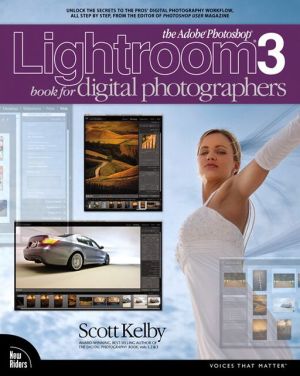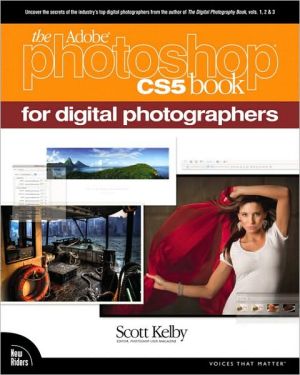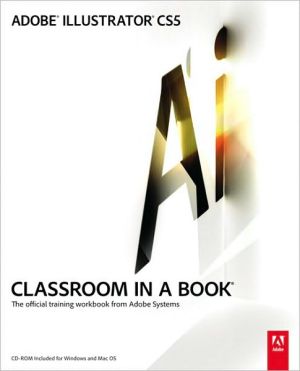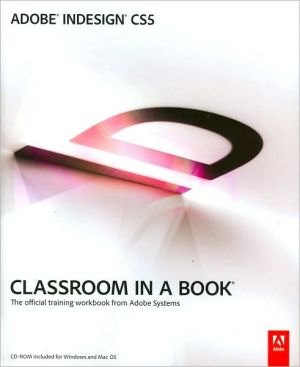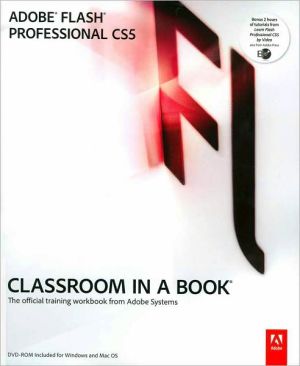Illustrator 10 for Windows and Macintosh: Visual QuickStart Guide
There's a good chance that anyone who's studied vector-based drawing during the last decade has read an Illustrator Visual QuickStart Guide in one of its many versions. Though this book has become the standard text in many design schools, it has evolved over the years along with the program itself. And with some of the radical changes in Illustrator 10 -- such as live distortion tools, dynamic data-driven graphics, and symbols to create repeating Web graphics and keep file sizes small -- the...
Search in google:
There's a good chance that anyone who's studied vector-based drawing during the last decade has read an Illustrator Visual QuickStart Guide in one of its many versions. Though this book has become the standard text in many design schools, it has evolved over the years along with the program itself. And with some of the radical changes in Illustrator 10 — such as live distortion tools, dynamic data-driven graphics, and symbols to create repeating Web graphics and keep file sizes small — the authors thoroughly revised this popular QuickStart Guide.Illustrator 10 for Windows and Macintosh: Visual QuickStart Guide includes information on all the latest features, a 24-page color section, and clearly marked locators to both new and improved features that can easily be found by simply flipping through the book. Best of all, it's delivered in a highly readable, entertaining, visual, and easy-to-navigate format. This affordable, task-based book may be the only one users need to create powerful graphics for print or Web. Library Journal Virtual Classroom covers basic program features and techniques step by step, with helpful notes and shortcuts. Per the series, it also includes video lessons on a CD-ROM that show and expand on the techniques in the text. Adobe's official effort, Classroom in a Book starts with a quick tour of common functions and moves on to more detailed lessons on specific topics and techniques, such as creating web graphics and working with layers. The review questions and suggestions for further practice ending each chapter, as well as the CD's lesson art files, are useful self-study aids. QuickStart jumps right into the Illustrator interface, though it does so a bit messily at first. Other chapters, however, provide helpful illustrations and screen shots. This is better reference than self-study material readers can easily look up how to accomplish common tasks. Special Edition is more appropriate for intermediate to advanced users, spending extra time covering version 10's new features and advanced topics like dynamic data-driven graphics. Troubleshooting sections at the end of each chapter answer common questions. All of these titles are appropriate purchases for public libraries. Institutions owning version 9 guides should upgrade for coverage of 10's new features. Copyright 2002 Cahners Business Information.
1. Illustrator Interface Tools. 2. How Illustrator Works. 3. Startup. 4. Views. 5. Objects Basics. 6. Select/Copy. 7. Transform. 8. Reshape. 9. Fill & Stroke.10. Pen.11. Layers.12. Create Type.13. Style & Edit Type.14. Acquire.15. Brushes.16. Symbols.17. Combine Paths18. Gradients.19. Appearances/Styles.20. Masks/Transparency.21. Distort.22. Filters.23. Precision Tools.24. Actions.25. Preferences.26. Output/Export.27. Web.28. Separations.Appendix A: Keyboard Shortcuts.Index.
\ From Barnes & NobleThe Barnes & Noble Review\ Adobe had three key goals for Illustrator 10: to make it a better tool for web graphics production; to give professionals new creative freedom; and to help them work far more productively. By most accounts, they’ve succeeded in all three areas -- making the program a far more compelling upgrade than some cash-strapped designers might’ve hoped it would be. \ What’s the best way to master Illustrator 10’s many new features, once you’ve invested in it? Check out Illustrator 10 for Windows and Macintosh: Visual QuickStart Guide. It’s both a great resource and a great value.\ These authors, both painters by profession, are past masters at explaining graphic design software using language and visuals that professionals can appreciate. Elaine Weinmann is an instructor at Pratt Manhattan and the New School Computer Instruction Center. Peter Lourekas has taught at New York’s Parsons School of Design, The New School Computer Instruction Center, and The Cooper Union School of Art. Together, they’re also responsible for Photoshop 7 For Windows And Macintosh: Visual QuickStart Guide and QuarkXPress 5 For Windows And Macintosh: Visual QuickStart Guide. They bring both excitement and insight to Illustrator 10. But above all, their step-by-step instructions make it easy to get results in just minutes, while you’re on deadline.\ After a review of the fundamentals, Weinmann and Lourekas offer a detailed introduction to creating and working with objects -- including Illustrator 10’s many new tools for simplifying the creation of both simple and complex shapes.\ For example, there’s the Flare tool, which creates soft glow circles consisting of a center, halo, rays, and rings -- much like a camera lens flare. There’s the new Line Segment tool, which lets you create multiple line segments without having to repeatedly click the pointer tool. There are also new Arc Segment, Rectangular Grid, and Polar Grid tools for creating open curves and complex matrices in a hurry.\ Illustrator has finally given you the Symbols feature you’ve been waiting for -- you needn’t be jealous of Freehand users anymore! With Symbols, it’s far easier to create repeating graphics, without ballooning your file sizes. Weinmann and Lourekas show how to create and place symbols, and how to use the Symbol Sprayer to create multiple instances of the same symbol all at once. (Finally, no more “copy and paste” for star fields, leaves on trees, and the like!)\ They also introduce Illustrator’s many new tools for editing symbols. The Sizer, Spinner, Stainer, Screener, Styler, and the wonderfully named Scruncher are the kinds of tools you’d expect in a state-of-the-art raster-style paint program, and they allow you to create astounding images you mightn’t have thought possible in Illustrator.\ You’ll find a brand-new chapter on Illustrator’s new tools for distorting images or elements thereof. Now, you can Warp, Pucker, Bloat, Twirl, Scallop, Crystallize, or Wrinkle to your heart’s content -- and the book’s before-and-after sample images make it instantly obvious how these features can empower you. There’s also detailed coverage of the long-requested Envelope feature, which lets you create a container for one or more objects, then distort the container, and have Illustrator correspondingly distort everything you put inside.\ As Adobe promised, Illustrator has continued to grow as a program for creating web images. Illustrator 10 for Windows and Macintosh: Visual QuickStart Guide includes detailed new coverage of Illustrator’s image slicing capabilities, as well as the program’s improved SVG export filter.\ There’s also a brief glance at Illustrator’s powerful “variables” feature for automatically generating design variations in conjunction with Adobe’s AlterCast image server. This feature is introduced so nicely, we’d have loved more coverage. Guess they’ve got to save something for the next edition.\ Not new, but every bit as important as ever: Weinmann and Lourekas’s essential coverage of outputting and exporting files, managing color, and working with separations and trapping.\ This edition also contains a 32-page sampler of work by some of the world’s best Illustrator artists: maps from Mark Stein; logos from Jim Spiece; posters from Nancy Stahl and Daniel Pelavin; and illustrations from Marti Shohet, Led Pants, Yoshinori Kaizu, and many others. These works give you just a taste of what can you can do with today’s Illustrator -- and Illustrator 10 for Windows & Macintosh: Visual QuickStart Guide. Bill Camarda\ Bill Camarda is a consultant, writer, and web/multimedia content developer. His 15 books include Special Edition Using Word 2000 and Upgrading & Fixing Networks For Dummies®, Second Edition.\ \ \ \ \ \ Library JournalVirtual Classroom covers basic program features and techniques step by step, with helpful notes and shortcuts. Per the series, it also includes video lessons on a CD-ROM that show and expand on the techniques in the text. Adobe's official effort, Classroom in a Book starts with a quick tour of common functions and moves on to more detailed lessons on specific topics and techniques, such as creating web graphics and working with layers. The review questions and suggestions for further practice ending each chapter, as well as the CD's lesson art files, are useful self-study aids. QuickStart jumps right into the Illustrator interface, though it does so a bit messily at first. Other chapters, however, provide helpful illustrations and screen shots. This is better reference than self-study material readers can easily look up how to accomplish common tasks. Special Edition is more appropriate for intermediate to advanced users, spending extra time covering version 10's new features and advanced topics like dynamic data-driven graphics. Troubleshooting sections at the end of each chapter answer common questions. All of these titles are appropriate purchases for public libraries. Institutions owning version 9 guides should upgrade for coverage of 10's new features. Copyright 2002 Cahners Business Information.\ \
